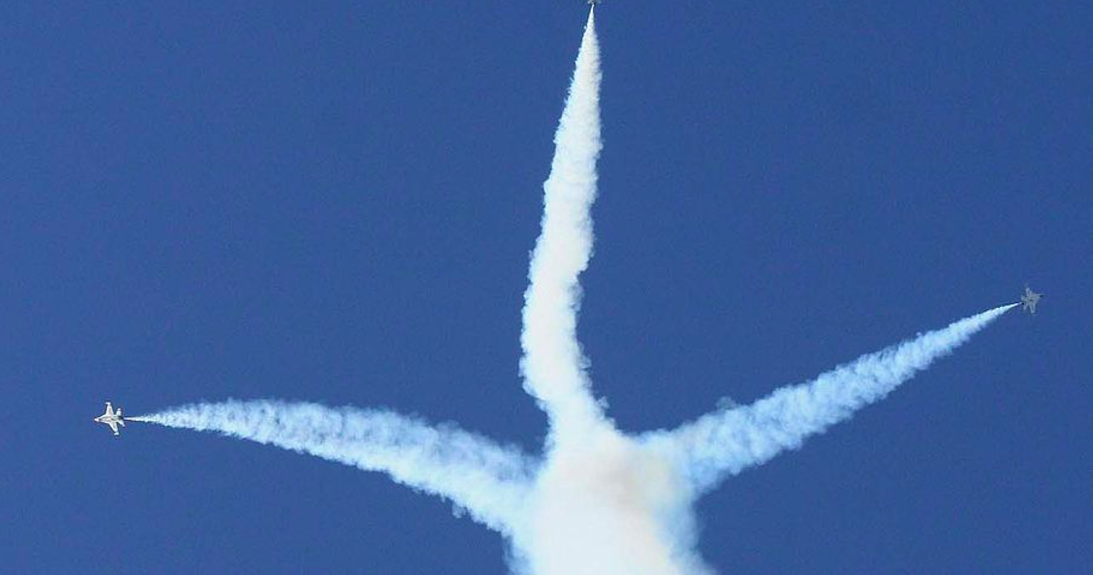“To all who have climbed sunward and chased the shouting wind, America stops to say, ‘Your service and your sacrifice will be remembered forever, and honored in this place by the citizens of a free and grateful nation.”
Then-President George W. Bush boomed these words ten years ago, on October 14, 2006, in a ceremony dedicating the towering United States Air Force Memorial in Arlington, Virginia — a hallowed structure comprised of “three stainless steel spires” that stand symbolic of the men and women who went wherever evil lurked, high above us all.
“A soldier can walk the battlefields where he once fought, a Marine can walk the beaches he once stormed. But an airman can never visit the patch of sky he raced across on a mission to defend freedom, and so it’s fitting that from this day forward airmen will have this memorial,” Bush went on to express.
During a ceremony at the monument, Chief Master Sergeant of the Air Force James A. Cody brought up the struggle won just to get it all built at the beginning of the new century. One would think a place specifically designated to pay tribute to our military veterans would go through without a hitch, but history reads otherwise, unfortunately.
This from Military.com:
He said it was a “hard-fought battle to actually have this memorial here” close by the Marine Corps War Memorial, known as the Iwo Jima Memorial.
The reference was to former Rep. Gerald B.H. Solomon, a New York Republican and Marine veteran, who introduced a bill in 1997 to prohibit the construction of any monument, memorial or other structure “within view” of the Marine Corps War Memorial. Solomon and others also filed suit to protect the site but lost in court.
Today, the memorial is celebrated by all branches of the U.S. military, and is even seen as a protector in the skies for nearby Arlington National Cemetery.
“Standing watch is what we do,” Air Force Chief of Staff General David Goldfein told Military.com. “So, how appropriate that this powerful, moving memorial stands watch over our fallen at Arlington Cemetery.”
More than 54,000 airmen have given their life for their country.
The spires, which reach 270 feet in height, were designed by architect James Ingo Freed. He sculpted them to resemble the contrails of the USAF Thunderbirds during their “bomb burst” formation (pictured above).




































